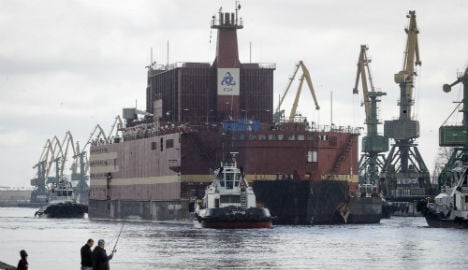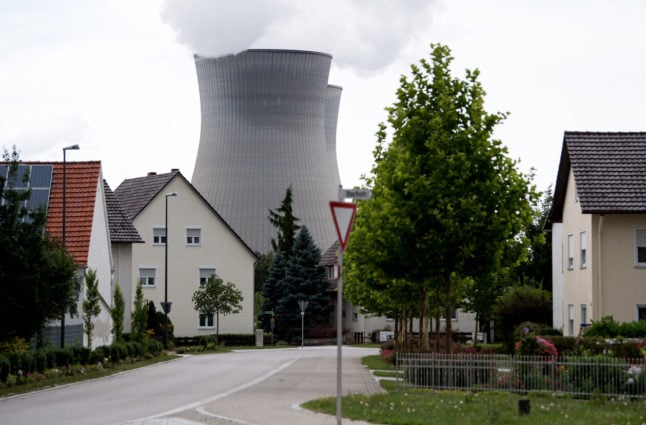NUCLEAR
Russia’s ‘nuclear titanic’ sets off for Swedish coast
A Russian power plant dubbed a “nuclear Titanic” by environmental campaigners set off on Saturday on its way to Sweden’s Baltic coast.
Published: 29 April 2018 16:19 CEST

The Akademik Lomonosov nuclear power station sets off from St Petersburg on Saturday. Photo: Dmitri Lovetsky/TT/AP
Akademik Lomonosov, the world’s first floating nuclear power plant, left the Baltic Shipyard in St Petersburg on Saturday morning.
It is expected to reach the Swedish coast next week, before making its way through the narrow Öresund straits, across the Kattegat and into the North Sea.
“We are following this closely through our cooperation with other countries and through our own national agencies,” Johan Friberg, Director of the Swedish Radiation Safety Agency told Sweden’s state broadcaster SVT.
Russia’s development of a floating nuclear power plant has generated alarm among its Nordic neighbours, with Norway’s foreign minister Børge Brende last June warning that the plan to transport it fully fuelled raised “serious questions”.
Karolina Skog, Sweden’s environment minister, argued last June that floating nuclear power stations created “a new type of risk”.
“It is important that Russia makes every effort to fulfil the criteria of international agreements, which should be seen as applying to floating nuclear power stations as well,” she said.
After a meeting in Moscow that July, Russia’s state nuclear corporation Rosatom relented on its plans to drag the reactor through the Baltic fuelled, saying that the plant would instead be fuelled in Murmansk after it had arrived in the Russian Arctic.
“We will carry out the transportation through the Baltic and the Scandinavian region without nuclear fuel on board,” Alexey Likhachev told the Independent Barents Observer.
Jan Haverkamp, nuclear expert for Greenpeace Central and Eastern Europe, has attacked the plant as a ‘nuclear Titanic’, and “threat to the Arctic”
“Nuclear reactors bobbing around the Arctic Ocean will pose a shockingly obvious threat to a fragile environment which is already under enormous pressure from climate change,” he said in a press release.
After the plant is fuelled and tested, it will be pulled across to Pevek on the Eastern Siberian Sea, where it will be used to power oil rigs.
Url copied to clipboard!


 Please whitelist us to continue reading.
Please whitelist us to continue reading.
Member comments